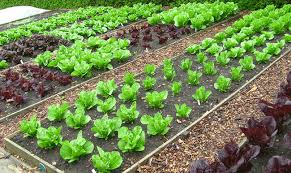Scientific Name: Ferocactus spp.
Common Name: Barrel Cactus
Origin: North and Central America
Introduction:
Barrel Cacti are a genus of cylindrical-shaped succulents belonging to the Cactaceae family. They are native to arid regions of North and Central America, including deserts and dry grasslands. Barrel Cacti are known for their robust, ribbed stems and vibrant flowers, making them popular choices for xeriscape gardens and desert-themed landscapes.
Cultivation Practices:
Light Requirements:
Barrel Cacti thrive in full sun and require several hours of direct sunlight daily to promote healthy growth and flowering. They are adapted to intense sunlight and can withstand prolonged exposure to high temperatures. When grown indoors, place your Barrel Cactus near a south- or west-facing window where it can receive maximum sunlight throughout the day.
Soil Needs:
Well-draining soil is essential for Barrel Cacti to prevent root rot. Use a specialized cactus potting mix or create your own by combining regular potting soil with coarse sand and perlite. Ensure the pot or planting area has excellent drainage to allow excess water to escape quickly. Water sparingly but deeply, allowing the soil to dry out completely between waterings, especially during the plant’s dormant period in winter.
Watering Schedule:
Barrel Cacti are highly drought-tolerant and should be watered sparingly. During the growing season (spring and summer), water deeply when the top inch of soil feels dry. Reduce watering in winter when growth slows down, as Barrel Cacti enter a period of dormancy and require less moisture. Avoid overwatering, which can lead to root rot and other fungal diseases common in cacti.
Temperature Requirements:
Barrel Cacti prefer warm temperatures between 70-90°F (21-32°C) during the day and can tolerate higher temperatures in their native habitats. They are sensitive to frost and should be protected from temperatures below 50°F (10°C). In colder climates, grow Barrel Cacti in containers indoors during winter and move them outside during warmer months to benefit from increased sunlight and air circulation.
Fertilization Needs:
Barrel Cacti have low fertilizer requirements. Feed with a diluted, balanced fertilizer formulated for cacti and succulents once a month during the growing season. Avoid fertilizing during winter when growth naturally slows down. Over-fertilization can lead to excessive growth or fertilizer burn, so use a half-strength fertilizer solution and apply sparingly to prevent nutrient buildup in the soil.
Propagation Methods:
Barrel Cacti can be propagated from seeds or offsets (pups). To propagate from offsets, carefully remove the young shoots that grow around the base of mature plants. Allow the offsets to dry and callous for a few days, then plant them in well-draining soil. Seed propagation requires patience, as Barrel Cacti seeds can take several weeks or months to germinate under optimal conditions.
Pests and Diseases:
Barrel Cacti are generally resistant to pests and diseases when grown in proper conditions. However, they can occasionally attract spider mites, mealybugs, or scale insects, particularly when stressed or grown indoors. Inspect your Barrel Cacti regularly for signs of pests, such as webbing, sticky residue, or visible insects on the stems. Treat infestations promptly with insecticidal soap or a gentle spray of water and mild dish soap.
Uses and Benefits:
In addition to their ornamental value, Barrel Cacti are valued for their ability to thrive in hot, dry conditions with minimal care. They are popular choices for xeriscape gardens, desert landscapes, and rock gardens where they provide architectural interest and vibrant flowers during blooming season. Barrel Cacti also make striking container plants and focal points in drought-tolerant landscaping projects.
Conclusion:
Barrel Cacti are resilient and visually striking succulents that add character and beauty to gardens and landscapes. With their cylindrical shapes, ribbed patterns, and drought-tolerant nature, Barrel Cacti are ideal for gardeners looking to create low-maintenance, water-wise environments. By following these cultivation practices and understanding their benefits, enthusiasts can successfully grow and enjoy healthy Barrel Cacti in various settings for years to come.



One thought on “Tips to Grow Barrel Cactus In Your Home Garden”